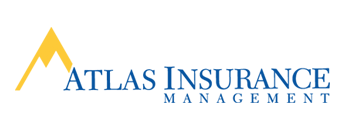Captives Expand To Meet New Strategic Opportunities
The modern insurance industry has continually evolved even as the sources of risk have multiplied with the growth of a fully networked international economy. As a result, it is safe to say that today’s industry offers more ways than ever for companies to participate in the lucrative world of risk management.
Captive insurance represents a necessary response within the industry to the challenge of risk management and mitigation. Today, companies are using captives in various ways to both manage and benefit from their risks. With that in mind, the following examples, drawn from real-life situations, serve to illustrate the innovative ways in which captive insurance programs can be developed and implemented to address different strategic objectives.
Creative risk management
Recently, a publicly-traded global producer of consumer products which offers innovative solutions for its customers needed an equally creative risk management solution. After identifying a layer of risk related to the general and excess liability between their policy-issuing carrier and the reinsurance markets, the company established a captive domiciled in the Cayman Islands and designed to participate in that risk layer.
Extensive review of their loss history and claims pattern convinced risk managers that the captive structure could provide the innovative risk solution they were seeking. As a result of their forward-thinking strategy, the resulting captive today facilitates a structure that allows a substantial savings in insurance premiums.
Both agencies and brokers, continuously driven to provide the best solutions for their clients, often are among the first to identify the value a captive program can deliver. For example, accident and health benefits coverage, in addition to standard health insurance, are both critically important in the sports world, whether it be recreational leagues or major sports organizations in the professional arena. Often, the insurance coverage must provide for benefits above and beyond the benefits of standard health insurance programs.
After reviewing the loss data and claims history for this type of coverage, one client partnered with their Domestic A-rated carrier to set up a Cayman-domiciled captive for this purpose. Their diligence revealed that it would be feasible to take a stipulated layer of risk into a captive structure and still have standard commercial and reinsurance markets cover the excess risks.
Heterogeneous and homogeneous captives
The heterogeneous group captive structure offers ways for companies in either the same or unrelated industries to manage their risks. For example, a group of public energy companies provides services across a broad spectrum of the industry. Its members have identified various risks that produce losses today, as well as the risks that could be anticipated to produce loss dollars well into the future.
By combining their premiums for workers’ compensation, general liability, auto liability and auto physical damage coverages, members were able to attain the buying power and benefits of a single large captive insuring only one company. These companies, through their own forward thinking and active engagement in their own risk management, are now fronted by an A-rated carrier and insured through a captive domiciled in the Cayman Islands.
On the other hand, homogeneous group captives are often developed in order to help companies within the same industry manage their risks through a standard insurance carrier-fronted captive program. Such companies can be unduly affected by the large swings in the commercial insurance market in what are generally considered to be higher risk industries.
One example of an industry negatively impacted by such fluctuations is the commercial trucking industry. A client dealing with these complications sought out a captive solution for auto liability, auto physical damage, general liability and cargo. After choosing the Caymans as the optimal fit for a domicile, the client took applications for consideration for membership in the captive based on pre-established underwriting guidelines.
Members are now empowered to consider and selectively choose new members who share the common cultural denominators of trucking operations focused on good safety and risk management records.
Special situations, special results
Captives help companies solve problematic issues that face all organizations today. For example, medical insurance has become an enormous expense for companies, with smaller businesses having the added burden of having to compete with larger employers to provide coverage. Further, the cost and risk of self-funding can make this option unfeasible.
One North Carolina-domiciled company addressed this challenge by forming a series business unit (SBU) captive which allows smaller businesses to take advantage of access to an A-rated medical stop-loss insurance carrier. As a result, these companies are now able to participate in a self-funded health insurance program.
Self-storage is a billion dollar business in the United States based solely on the overflow storage of personal belongings in warehouse facilities. When a company is storing other people’s possessions, the need arises to insure itself against loss or damage to a tenant’s personal property. Of course, one person’s treasure is another’s junk. With this as background, a client established a captive program domiciled in the Caymans to insure renter storage unit contents. With certain states prohibiting the sale of insurance through a limited line license, an operator’s program is in place to provide coverage through a master policy. Finally, bond insurance is an important day-to-day operational challenge for many of today’s businesses, with a multitude of surety companies offering bonds. One client recognized that they could offer an exceptional bond insurance solution by offering exclusive partnerships, and they established a North Carolina-domiciled captive for this purpose. The captive writes preferred bond business using established underwriting guidelines. These established best practices allow for a partnership with A-rated companies who provide reinsurance.
As one can see, captive strategies can be devised and implemented to address many situations and challenges with greater flexibility and profitability than are often available through standard insurance markets. Atlas Insurance Management provides both expertise and a depth of experience in developing creative solutions through well-devised captive insurance programs.
